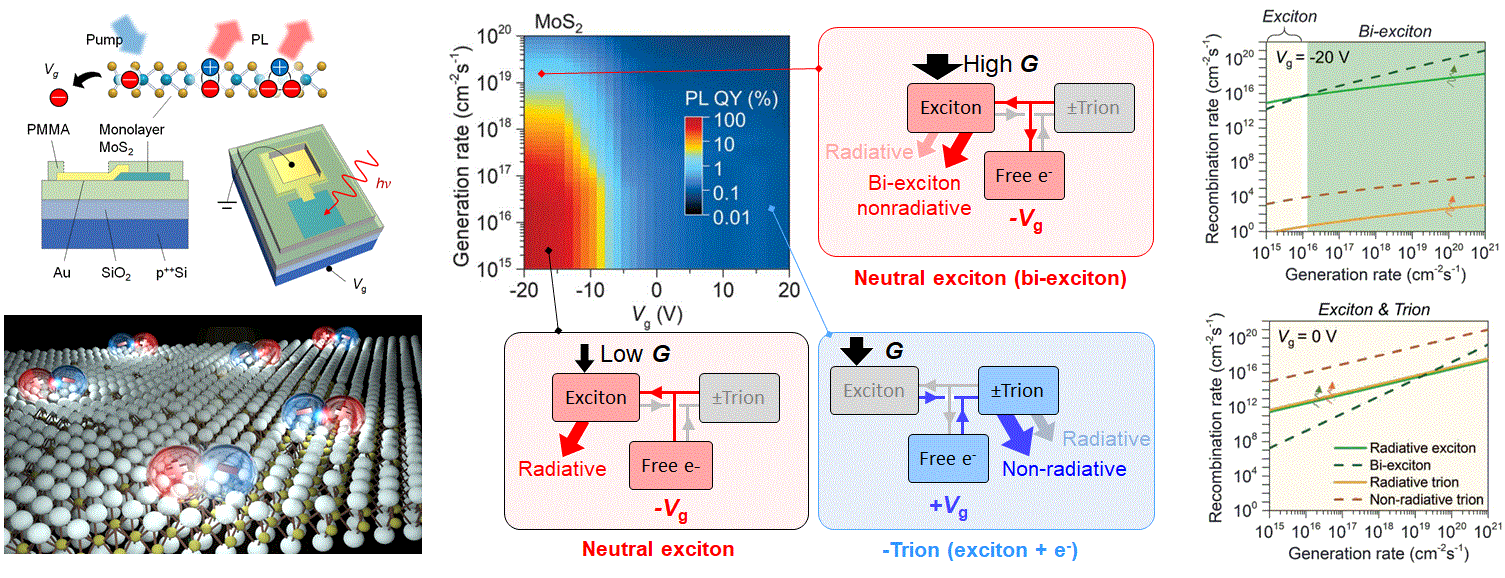DHLab
Exciton Photophysics
Once semiconductors are thinned down to the atomic level, strong many-body interactions cause new physics to emerge that deviates from well-known free carrier models. A prominent effect is that carriers turn from “free” to “bound” species even at room temperature, so-called room temperature excitons. Using monolayer semiconductors as the platform (i.e., semiconductors at their ultimate thickness limits), I have shown that such thickness-determined excitonic systems are promising for optoelectronic applications due to their near-unity photoluminescence (PL) quantum yields (QYs), a key figure of merit dictating the maximum efficiency achievable in light-emitting diodes, lasers and solar cells. The PL QY of these materials strongly depends on background charge concentration, and near-unity PL QY in chemically-untreated monolayers can be achieved at room temperature by only electrostatic doping (Science, 2019). The QY is highest when the monolayers are electrically intrinsic. This is surprising, as it indicates that all neutral excitons recombine radiatively even in the presence of native defects. My research reveals that room temperature excitons are robust and bright regardless of monolayer quality, indicating the potential of achieving highly efficient excitonic devices.

The study also shows that PL QY changes as a function of the excitation laser pump power. At the high pump, excitons recombine with each other without emitting light in a process called biexciton recombination. As bright light-emitting devices operate in the high pump regime, this biexciton recombination process will be the limiting factor in practical optoelectronic devices. To describe the photophysics, a simple kinetic model that involves excitons, trions, biexcitons, and free carriers is developed to explain the recombination process in both sulfur- and selenide- based TMDCs. Python code is available here.
First-authored publications:
1) Science, 364, 468–471, 2019.
2) Science, 350, 1065, 2015.